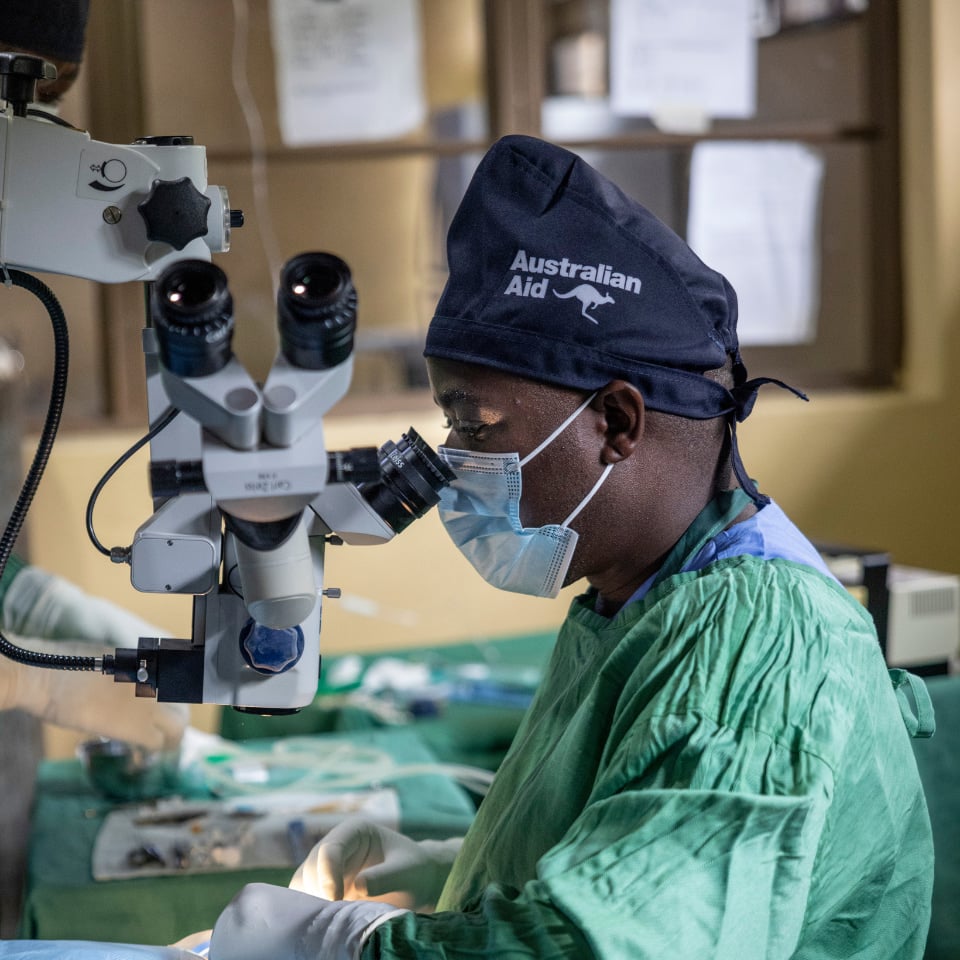The Diabetes Eye Health Guide

The role of primary health care in preventing vision loss from diabetes
What is diabetic retinopathy?
Diabetic retinopathy is a complication of diabetes in which the capillaries in the retina are damaged as a result of chronic hyperglycaemia (high and varying blood sugar levels). The damaged capillaries allow leakage in to the retina, disrupting its normal function, and capillary blockage, which restricts blood flow to the retina depriving it of oxygen. This can lead to loss of vision and eventually blindness. Diabetic retinopathy is generally asymptomatic until it becomes more severe. Many people with mild diabetic retinopathy have no symptoms. In more advanced cases however, blurred vision, floaters or sudden catastrophic loss of vision can occur in one or both eyes.
Diabetic retinopathy affects over one third of all people with diabetes and is the leading cause of vision loss in working-age adults. Globally the prevalence of diabetes is increasing rapidly, particularly in low and middle income countries, and without effective action, so too will the number of people with diabetic retinopathy.
Diabetes eye health: A guide for health professionals
In 2013, the International Diabetes Federation (IDF) and The Fred Hollows Foundation entered in to a ten year partnership to increase the impact and influence the two organisations can have to prevent and reduce the impact of DR and act collaboratively to combat vision loss as a result of diabetes, particularly in low resource settings. An outcome of the partnership was to support a group of international experts to develop the Diabetes Eye Health: A Guide for Health Professionals.
The Guide is a practical and informative document developed for primary health professionals on managing diabetic eye disease, in particular diabetic retinopathy (commonly called DR).
The Guide aims to raise awareness among health professionals about the growing prevalence of DR, and identifies the key roles and actions health care professionals can take in prevention, screening, monitoring, and referral.
The Guide was developed in response to the growing numbers of people with diabetes, particularly in low and middle income countries. It points to the important role of health professionals in identifying and facilitating management of DR and the need for collaboration across diabetes, eye and primary health sectors.
This Guide builds on the guidelines developed by the International Council of Ophthalmology (ICO) Guidelines for Diabetic Eye Care 2014 that set out the need for regular eye care from an ophthalmic perspective. The ICO guidelines stress the need for a team approach to the provision of care and highlight what is needed from primary health care workers and others involved in the care of people with diabetes.
Download your copy of the Diabetes Eye Health: A Guide for Health Professionals.
Why was the guide developed?
The world is facing an epidemic of diabetic retinopathy particularly in developing countries. The problem is that diabetes is not like cataract. There is no quick fix. Blindness can be largely avoided with effective diabetes management, regular eye exams, and timely treatment. What is required to achieve this, are new approaches to service provision and cross-sector collaboration to reorientate the health system and increase the role of primary health workers in screening and referral of DR.
There are a range of clearly defined clinical guidelines for diagnosis and treatment of DR developed for eye specialists. However, there is little advice written for those providing primary health services for people with diabetes on how to manage eye health. In addition, clinical practice guidelines for the management of DR have been implemented throughout the world, but mainly in developed nations where there is access to quality resources and appropriate referral pathways. In low resource settings, there is a need to provide practical and useful advice.
In 2013, the IDF and The Fred Hollows Foundation entered in to a ten year partnership to increase the impact and influence the two organisations can have to prevent and reduce the impact of DR, particularly in low resource settings. An outcome of the partnership was to the development of this Guide.
Related articles

The eye doctor helping communities see again in Laos

Taking eye care to potters in Bangladesh

